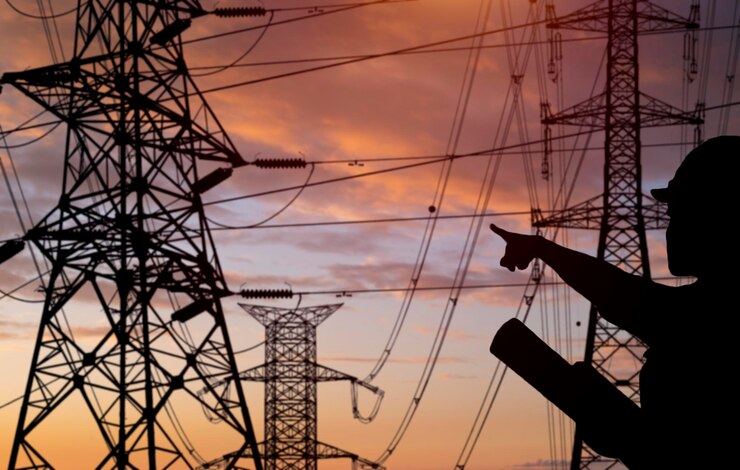Contatc
Substation and Transmission Line Connectivity: Ideal Delivery
2025-02-10
Substation and Transmission Line Connectivity: The Backbone of Efficient Power Distribution
Energy serves as the basic operational force to power industrial facilities as well as residences and infrastructure as we move forward in the modern world today. Power grid reliability serves as a fundamental priority because it determines an essential operational framework. This article explores how substation and transmission line connectivity matters along with transmission line integration obstacles and contemporary engineering approaches to simplify complex procedures. They provide technical understanding of power technologies including high-voltage transmission systems alongside protection relays and switchgear. It offers engineering and power system professional guidance throughout.
Understanding Substation and Transmission Line Connectivity
The electrical grid depends on substations as essential facilities that transform voltage levels while managing smooth electricity distribution. Substations host transformers together with switchgear circuit breakers and protection relays as their core components. These facilities serve as essential points that enable the transfer of electricity between power generation facilities and the people who need electrical power.
- The transmission of electricity across extended distances at minimal loss is done through high-voltage substations.
- The ploy is medium-voltage substations to distribute power throughout regional areas.
- Low-voltage substations exist in proximity to consumer locations for delivering safe power distribution.
Transmission Lines and Their Role in Connectivity
The electrical grid utilizes transmission lines to deliver power from power plants to substations while enabling substations to connect. Transmission lines directly affect the stability of the electric grid alongside the rates of energy loss in the system. HV transmission lines are selected for long-distance power transmission since their design minimizes transmission losses. Transmission lines connect to substations by using complex arrangements of substation connectors as well as transformers and switchgear devices. The combined system ensures safe and efficient power distribution to its final location.
The Importance of Reliable Substation and Transmission Line Connections
Grid Stability and Power Supply
Reliability stands as the main priority of every power system. The stability of power grids demands continuous electric power delivery. The strong substation and transmission line interconnection provides the necessary strength to support grid stability during times of changing demand and equipment faults. The grid remains at risk of power failures when connectivity is absent because it faces the threat of equipment breakdowns in addition to total outages and reduced voltage drops.
Efficient Energy Transfer
The main advantage of good substations along with transmission line interconnections revolves around efficient energy transfer capabilities. The energy transfer system incorporates features to achieve low energy losses when power travels from one point to the next. Modern Extra-High-Voltage (EHV) transmission lines enable electricity transmission across long distances while maintaining minimal power loss which maximizes the transfer efficiency.
Renewable Energy Integration
Solar and wind installations are becoming more prominent as the world embraces renewable power sources therefore grid interconnectivity of these facilities becomes essential. Different challenges arise when integrating renewable energy into power grid networks due to voltage fluctuations which affect grid stability. Through adequate grid connection investigations along with interconnection agreements both renewable sources such as solar and wind power can become fully integrated parts of the power grid.

Key Components in Substation and Transmission Line Connectivity
Transformers and Voltage Conversion
Substation and transmission line connectivity depends largely on transformers which serve as principal elements. These devices enable the conversion of electric voltage levels which safeguards the electricity transmission throughout networks. Transmission lines need transformers for long-distance power transport because they boost voltage levels before transmission then substations employ transformers to lower voltage before distributing electricity across the grid.
Switchgear and Protection Relays
Switchgear serves together with protection relays as fundamental systems that manage as well as guard electrical circuits against damage. Electricity networks utilize switchgear to detach malfunctioning areas thus stopping additional network damage then protection relays automatically search for faults. These functional devices maintain both safety measures and system stability for the entire power network.
Circuit Breakers
Power grid safety depends strongly on circuit breakers to protect it effectively. The electrical flow through circuits gets automatically interrupted by circuit breakers during the detection of any fault conditions that include both overloaded situations and short circuits. The safe operation of power grids depends heavily on the appropriate installation and proper maintenance of circuit breakers used for transmission line connections because these serve to protect the system from damage.
Best Practices for Substation and Transmission Line Connectivity
Design Considerations
During the design process of substation and transmission line connection, several essential factors need consideration by engineering professionals.
- Locations need to be chosen relative to power generation facilities as well as end-user locations.
- Voltage requirements: and transformer specifications.
- Grid stability together with safety depends on switchgear and protection systems.
- The connection must take into account weather conditions and possible natural disaster events as important environmental factors.
Grid Connection Studies
A full set of grid connection analyses needs to be performed before new substations or transmission lines receive interconnection. The research analyzes operability together with stability effects and risk evaluation for infrastructure. Through their work engineers create superior interconnection designs which prevent grid failures by design.
Interconnection Agreements
When entities plan to link up with the power grid they must follow established agreements with utility providers. The agreements specify all technical measures together with operational standards and legal requirements that will govern the connecting procedures between parties.
Technological Advances in Substation and Transmission Line Connectivity
Smart Grid Technologies
Smart grid technologies have now transformed the way substation and transmission line connectivity operates. Real-time electrical grid monitoring facilities provided by these technologies enable utility operators to monitor power systems immediately and maintain complete command for rapid fault responses efficient renewable energy generation and optimized power use. By using Supervisory Control and Data Acquisition systems commonly known as SCADA operators gain the ability to remotely control grid operations.
High-voltage direct Current (HVDC) Transmission
HVDC transmission represents a contemporary technology that supplies superior performance than standard AC transmission specifically in applications of extended electricity transport. HVDC systems establish superior efficiency levels while reducing transmission losses and enabling precise power flow management which makes them appropriate for connecting substations and remote locations.
Conclusion
Substation and transmission line connectivity is a cornerstone of modern power grids, ensuring that electricity flows smoothly, efficiently, and safely. The integration of advanced technologies, careful planning, and proper engineering solutions can mitigate challenges and improve grid reliability. Whether connecting renewable energy to the grid or designing high-voltage interconnections, a deep understanding of the system’s components and processes is crucial for successful implementation. For more information on substation and transmission line solutions, visit XY Tower, where we provide cutting-edge power system integration services and solutions.

Hey, I’m Chunjian Shu
"X.Y. Tower: Reliable, innovative solutions for high-quality towers and electrical equipment with professional service.
